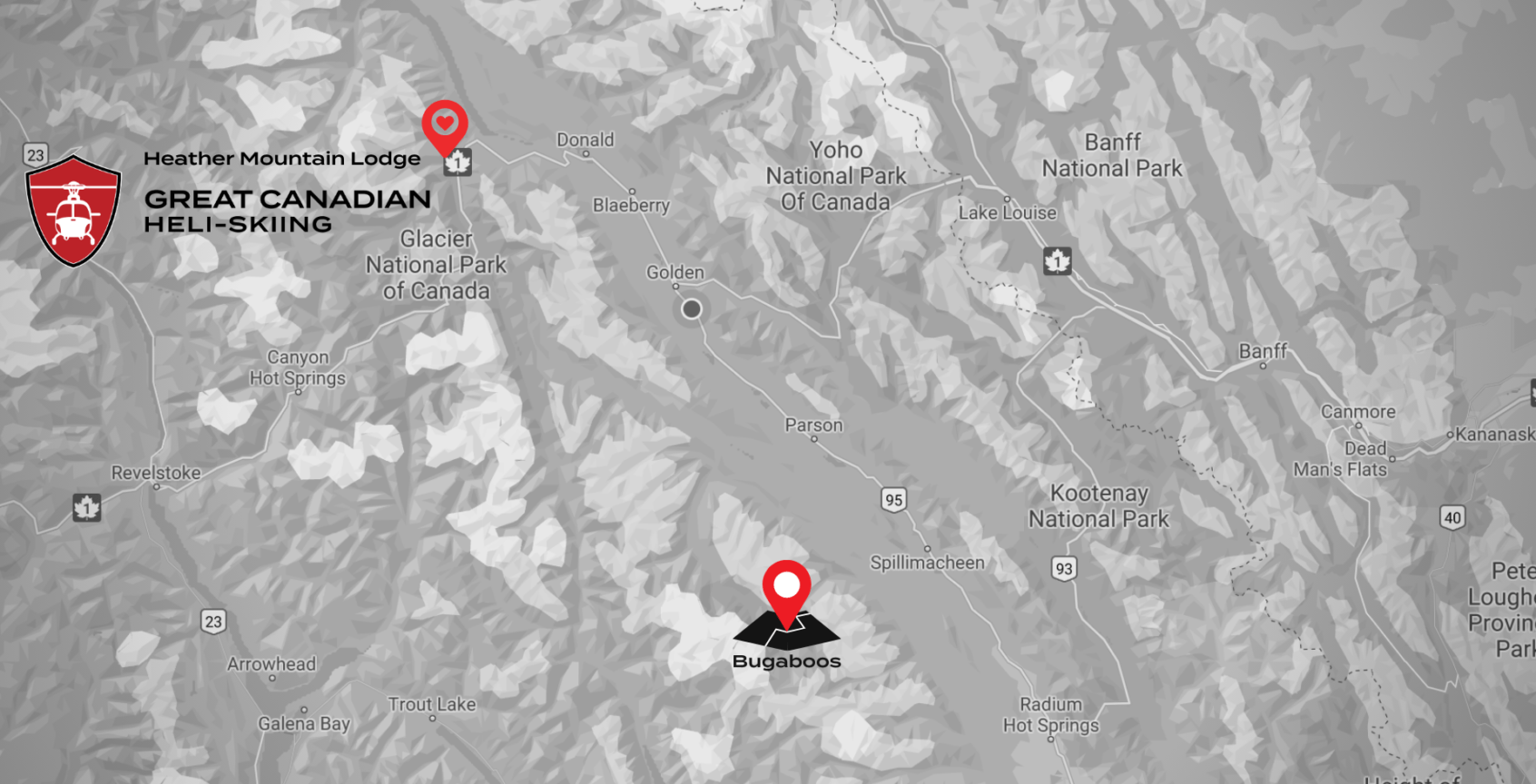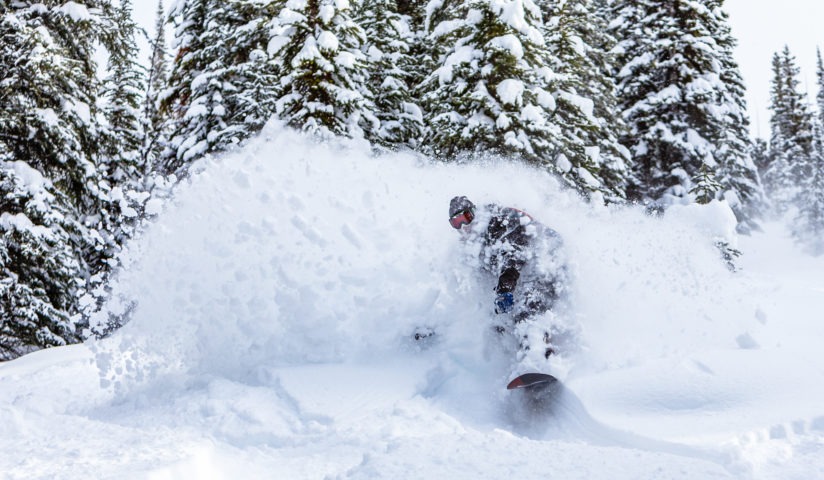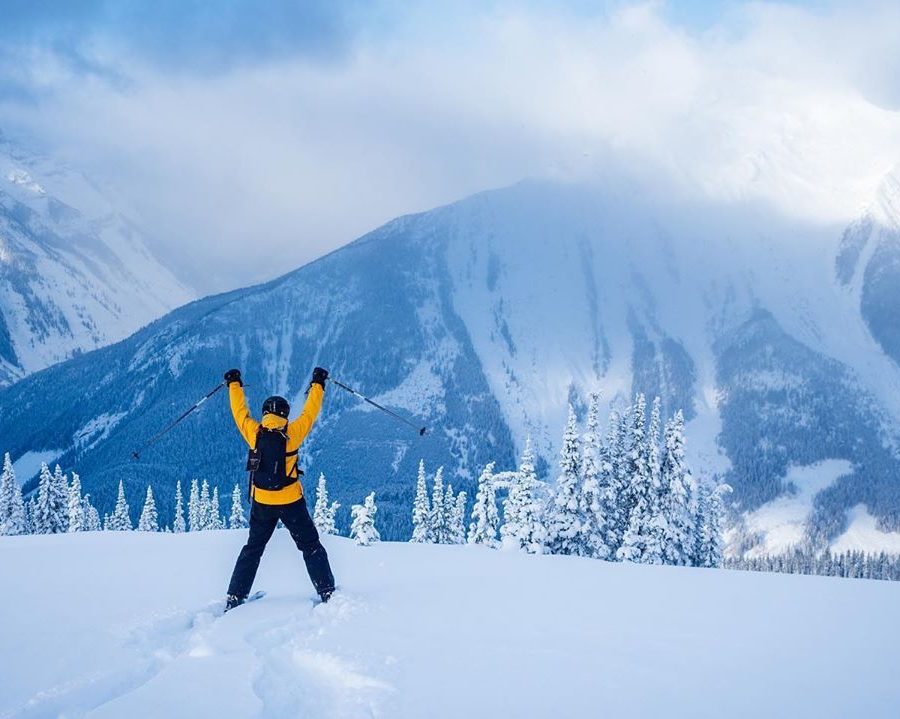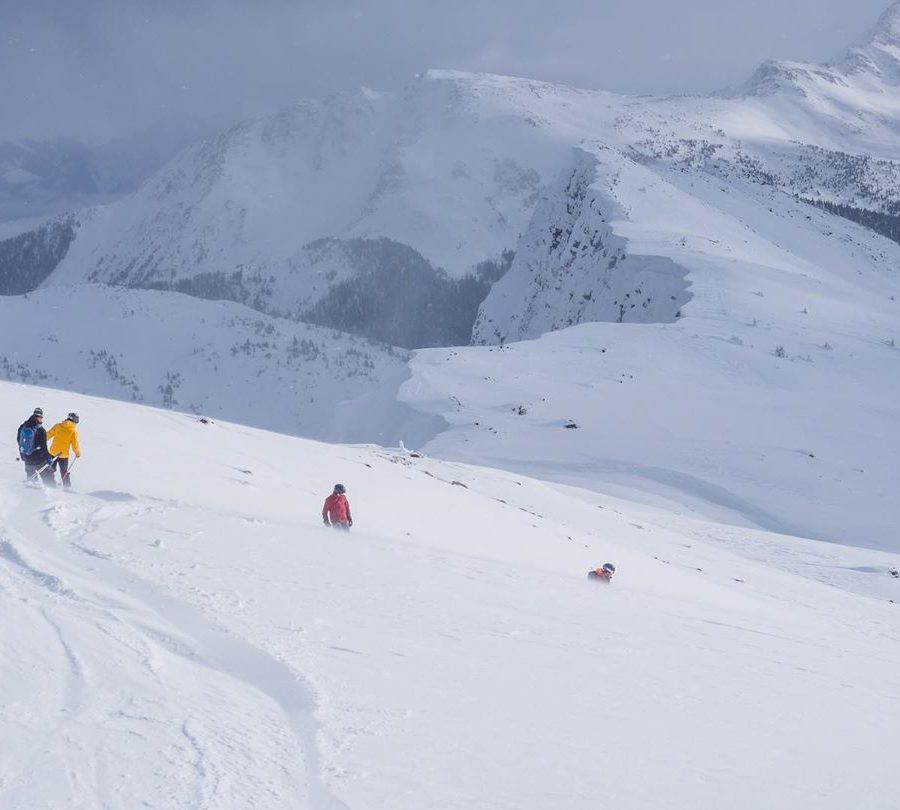When the Austrian-born Gmoser immigrated to Canada in 1951 and eventually landed in Banff, he became part of the second generation of mountaineers that shaped the origin story of western Canada’s celebrated mountain culture. He followed in the footsteps of the venerated Swiss guides that the Canadian Pacific Railway brought over to guide the guests staying at the CPR chalets in Banff, Lake Louise and on our own Rogers Pass. From the early 1900s, those guides put up numerous first ascents, unlocked these peaks for a new wave of adventurers looking for unclimbed mountains after Europe’s had been mapped, and laid the foundation for skiing as the winter obsession it is today in this region.
Over the course of the 50s and into the early 60s, Gmoser put up several of his own first ascents, made a name for himself as a filmmaker and became a certified mountain guide. In 1965, Olympic ski racer Brooks Dodge asked Gmoser to guide him on a ski touring trip, with a twist: could Gmoser use a helicopter to access the peaks, so that he could ski the bottomless powder of the backcountry without the hiking?
The year before, Gmoser had guided a ski touring group up to the Bugaboo Glacier in the Purcells, and called it “quite an ordeal” just to get up the road back then. He knew the Bugaboos represented unlimited potential for skiing, and thought it was exactly right for the kind of helicopter-assisted skiing Dodge proposed.
That year, Gmoser set up rustic accommodations for guests in an old logging camp outside Radium, B.C., 160 kilometers southwest of Great Canadian’s headquarters, and guided 18 people over two weeks in the world’s inaugural heliskiing venture. By 1966, he operated for six weeks with 70 guests, and by 1968, he’d built the historic Bugaboo Lodge in the heart of those mountains. It represented the birth of a new era in skiing, and in Canada’s mountain legacy; and the modern access to the country’s untamed landscape again presented a fresh frontier that drew guides hungry for challenge and skiers hankering for new adventure.
Two years later to the northeast, another Austrian immigrant and fast friend of Gmoser’s, Mike Wiegele, carved out a tenure south of Valemount and began Mike Wiegele Heli-Skiing, which today boasts the biggest heli-skiing area in the world. And two years after that, two of Gmoser’s original guides also launched their own operations, expanding heli-skiing to the Columbias.
Rudi Gertsch, the latest iteration of Swiss guides to put down roots and exert undeniable influence in this region, founded Purcell Heliskiing in 1974 out of Golden, the gateway to Great Canadian Heli-Skiing, and became known as the first to bring ski tourists to that town. Peter Schlunegger, a fourth-generation Swiss guide whose great grandfather was one of the first Swiss guides to work from Glacier House on Rogers Pass, started Selkirk-Tangiers Heli-Skiing out of Revelstoke. Over the following years, several more operations popped up to take advantage of the vast empty reaches of snow-covered peaks sprawling through this region of B.C.
Today, with Great Canadian Heli-Skiing’s tenure straddling the history-rich ranges of both the Purcells and Selkirks, we’re proud to carry on the tradition of these pioneering visionaries, and to bring our guests the very same sense of adventure as the early days of heliskiing’s famed beginnings.






